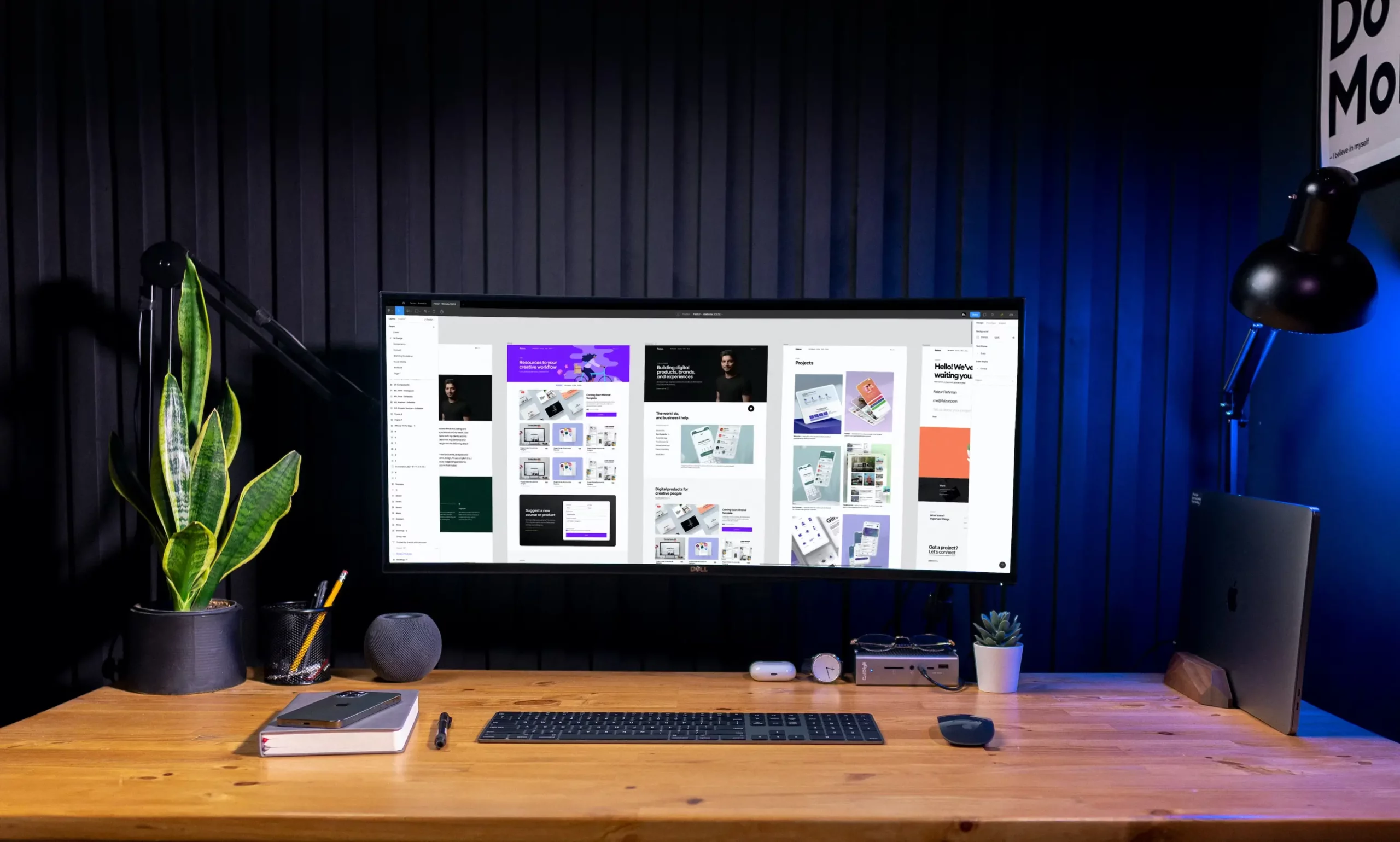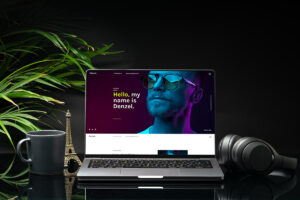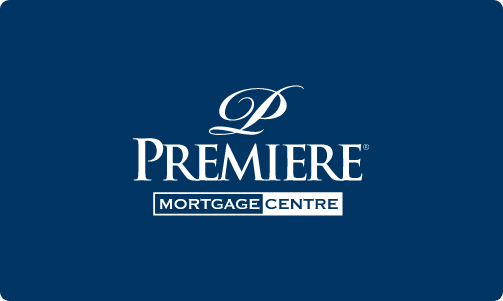Every element on your website, from colour schemes to content tone, sends a message, so in the end, your website must be the embodiment of your business and brand identity. A well-designed website must support your Marketing efforts in boosting your brand, showcasing your company’s core values and positioning you as a thought leader in your industry. On the other hand, a website that fails to reflect your business identity is a missed opportunity and a potential setback. Every second your website isn’t aligned with your business identity, you’re potentially missing out on partnerships, investments, and growth opportunities. Don’t get left behind. Let us show you how to design a website that reflects your brand identity. But before we go deeper, what is brand identity?
The 3 foundational elements of business identity
Brand identity is the personality and look of your business. It’s how your business presents itself to the world and how it wants to be seen by customers. This includes certain elements that can make or break how your business is perceived:
1. Logo and branding
The logo is often the first thing people associate with a brand. It’s a powerful representation of your company’s values and vision. A well-designed logo can evoke feelings, memories, and perceptions about your business.
2. Color schemes
Colors are visual elements that carry emotional weight. Different colours can evoke various emotions and perceptions. The right palette can enhance your brand’s message, while a mismatched one can dilute or misrepresent it.
3. Typography
The fonts you choose, their size, spacing, and arrangement, all contribute to how your message is perceived. Typography also affects readability and user experience. Ensuring that your text is legible and aesthetically pleasing on all devices is vital for effective communication and engagement. With these foundational elements in mind, let’s explore how to make your website reflect your brand identity. 
How to design a page that truly screams your brand identity
1. Understand your brand’s core values and DNA
Before diving into design, deeply understand your brand. What’s your mission? Vision? Core values? This is foundational, it’s the compass for every design choice you’ll make.
2. Ensure consistent branding across all pages
Use a consistent logo placement, preferably in the top left corner. Ensure brand colours are used uniformly across all web elements. Maintain a consistent tone and voice in all written content as uniformity across your site builds trust and reinforces brand recognition.
3. Choose a colour palette that resonates
Understand the psychology behind colours and what they convey. Ensure the colours align with the emotions and values you want to evoke. Use complementary colours as well. Aim for harmony and resonance, not just aesthetics.
4. Typography matters, make sure you choose right
Choose fonts that reflect your brand’s personality (e.g., formal, playful, modern). Maintain consistent font sizes and styles for headings, subheadings, and body text, and ensure readability across all devices.
5. Use high-quality imagery
Choose high-quality images that align with your brand. Whenever possible, opt for custom shots over generic stock photos. And always optimize for web performance.
6. Craft a memorable ‘about us’ page
Share your brand’s journey, its milestones, and the faces behind its name. Let visitors connect with your brand’s human side.
7. Integrate brand voice and messaging
Whether it’s playful, formal, or inspirational, maintain a consistent voice. Craft content that speaks directly to your target audience, addressing their pain points, needs and aspirations.
8. Use interactive brand elements
Animations, hover effects, custom icons, or unique illustrations can elevate user engagement. But ensure they align with, and not distract from, your brand’s identity.
9. Ensure a seamless user experience
Ensure easy navigation with a clear menu structure. Prioritize mobile optimization, ensuring brand consistency across devices. Fast loading times and intuitive design enhance user engagement and reflect professionalism as well.
10. Include consistent call-to-action (CTA) elements
CTAs should be clear, compelling, and in line with your brand’s goals. Use brand colours and language that motivates users to take action.
Why business identity matters in web design
Your website is the equivalent of a physical storefront. Just as a passerby might be drawn into a well-presented neat and clean shop, a visitor is more likely to engage with a website that looks professional and inviting. Within mere seconds (5 seconds, actually, it takes us about 5 seconds to form an opinion or a conclusion about something), visitors form an opinion about your business based on your site’s design and content. When every element of your website—from color schemes to typography—represents your brand’s core values and messaging, it sends a clear signal to visitors. It tells them that you’re reliable, professional, and pay attention to detail. A consistent brand presentation across all platforms can increase revenue by up to 23%.
Mistakes to avoid in web design
1. Overloading the website with information
Bombarding visitors with excessive text, images, or multimedia can be overwhelming. It can confuse the user and dilute your main message. Adopt a minimalist approach. Prioritize essential content, use whitespace effectively, and break up text with headings, bullet points, and visuals.
2. Neglecting mobile users
With a significant portion of web traffic coming from mobile devices, a non-responsive design can alienate a vast segment of your audience. It can also hurt your search engine rankings. Ensure your website is mobile and SEO-friendly. Opt for a responsive design that adapts to various screen sizes. Regularly test your site on different devices to ensure a seamless user experience.
3. Inconsistent branding
Inconsistent use of logos, colors, fonts, or messaging can confuse visitors and weaken your brand identity. It portrays a lack of professionalism and attention to detail. Develop and adhere to a brand guideline. Ensure that every element on your site, from the color scheme to the tone of content, aligns with your brand’s identity. Avoiding these common mistakes will help you enhance the user experience and strengthen your brand’s online presence. Remember, in web design, sometimes less is more. Prioritize clarity, consistency, and user-friendliness to make a lasting impression.
Why professional web design services matter
As stated before, a website must be a reflection of your brand’s identity, values, and professionalism. Because of that, you must ensure your site is built by experienced professionals. While DIY website builders or in-house projects might seem cost-effective initially, the complexities of building a high-performing website go far beyond aesthetics. Here’s why partnering with a professional web design agency is a strategic business decision:
1. Multifaceted expertise
Building a website isn’t just about creating a visually appealing layout. It requires a symphony of skills, from coding to graphic design, content creation, and more. A professional agency brings all these experts under one roof, ensuring every aspect of your site is handled with precision.
2. Cost-effective in the long run
DIY platforms often come with hidden costs, be it for premium features, plugins, or scalability. Over time, these can add up. The in-house vs. agency dilemma Building an in-house team means hiring multiple experts—from web developers to SEO specialists. This not only increases payroll but also requires time and resources for training and tools. An agency provides a consolidated, cost-effective solution with a team already equipped with the latest tools and trends.
3. Integration of the latest trends
Professional agencies are always on top of the latest design trends, SEO updates, and technological advancements, ensuring your website remains contemporary and competitive.
4. Holistic approach
A successful website is the result of various departments working in harmony. From SEO and CRO to graphic design and content strategy, an agency ensures that every element is optimized and cohesive.
5. Time-efficiency
While the agency handles your website, you can channel your energy and resources into what you do best—running your business. In essence, while the initial investment in a professional web design service might seem substantial, the long-term benefits—be it in terms of ROI, brand image, or user engagement—far outweigh the costs. Partnering with an expert web design agency like Antimatter Creative Labs ensures that your website isn’t just another URL on the internet, but a powerful tool that propels your business forward.
Antimatter Labs is your partner in professional web design
At Antimatter Labs, we specialize in designing and building efficient websites optimized for SEO and conversions.  We have a dedicated team of web designers, graphic designers, web developers, SEO strategies and content writers to ensure your website goes live faster than with traditional in-house teams or freelancers. Partner with professionals who prioritize your success! Contact us today and let’s bring your brand’s identity to life online.
We have a dedicated team of web designers, graphic designers, web developers, SEO strategies and content writers to ensure your website goes live faster than with traditional in-house teams or freelancers. Partner with professionals who prioritize your success! Contact us today and let’s bring your brand’s identity to life online.






